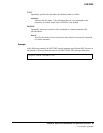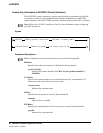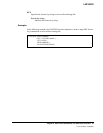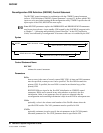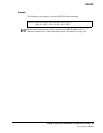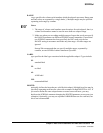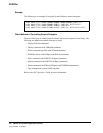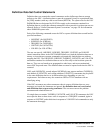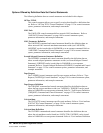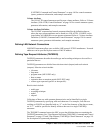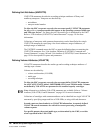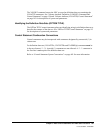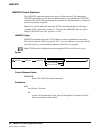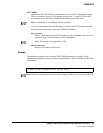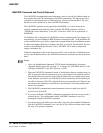
Chapter 3. HSC Control Statements and HSC Start Procedure 103
1st ed., 6/30/04 - 312579601
Definition Data Set Control Statements
Definition data sets contain the control statements used to define tape data set storage
policies to the HSC. A definition data set must be sequential (it may be a partitioned data
set [PDS] member) with any valid record format (RECFM). The syntax rules for the HSC
PARMLIB data set designated by SLSSYSxx apply to the statements contained in a
definition data set, except that comment statements with an asterisk in column one are not
allowed. Refer to “Control Statement Syntax Conventions” on page 439 for information
about PARMLIB syntax rules.
Each of the following commands cause the HSC to open a definition data set and load its
specified attributes:
• LMUPDEF (for LMUPATH)
• SCRPDEF (for SCRPOol)
• TREQDEF (for TAPEREQs)
• UNITDEF (for UNITATTRs)
• VOLDEF (for VOLATTRs).
The user can specify LMUPDEF, SCRPDEF, TREQDEF, UNITDEF, and VOLDEF
control statements either in the HSC PARMLIB data set to load the definition data sets at
startup, or issue them as operator commands to dynamically load the data sets without
stopping the HSC. The LMUPDEF, SCRPDEF, TAPEREQ, UNITATTR, and VOLATTR
statements contained in a definition data set are in effect only on the host that opens the
data set. They are not broadcast or propagated to other hosts, and are not maintained
across HSC stops and starts. The definition data sets must be opened each time the HSC is
restarted.
LMU path (LMUPATH), scratch subpool (SCRPOol), tape request attribute (TAPEREQ),
unit attribute (UNITATTR), and volume attribute (VOLATTR), statements may be placed
in the same definition data set or in different data sets, depending on your site
requirements. Each data set may also contain an OPTion TITLE statement with an
identifying string.
If the HSC encounters any other statements when it opens a definition data set, error
messages are issued, the statements are ignored, the definition data set is not loaded,
and definition data set processing terminates. The user must correct the problem
statements and reload the data set.
If a single data set contains TAPEREQ, UNITATTR, and VOLATTR statements, the HSC
must open the data set three times: once in response to a TREQDEF command, again in
response to UNITDEF, and a third time in response to VOLDEF. Each command uses only
the statements that apply.



